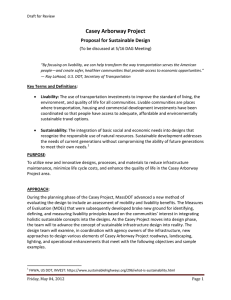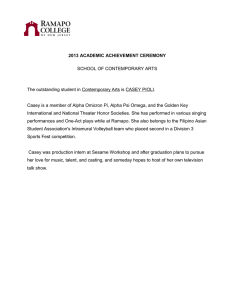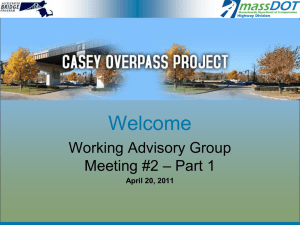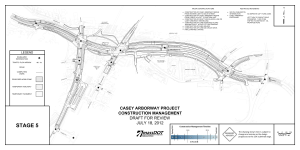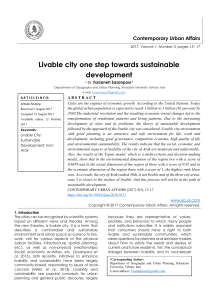Casey Arborway Project Proposal for Sustainable Design
advertisement
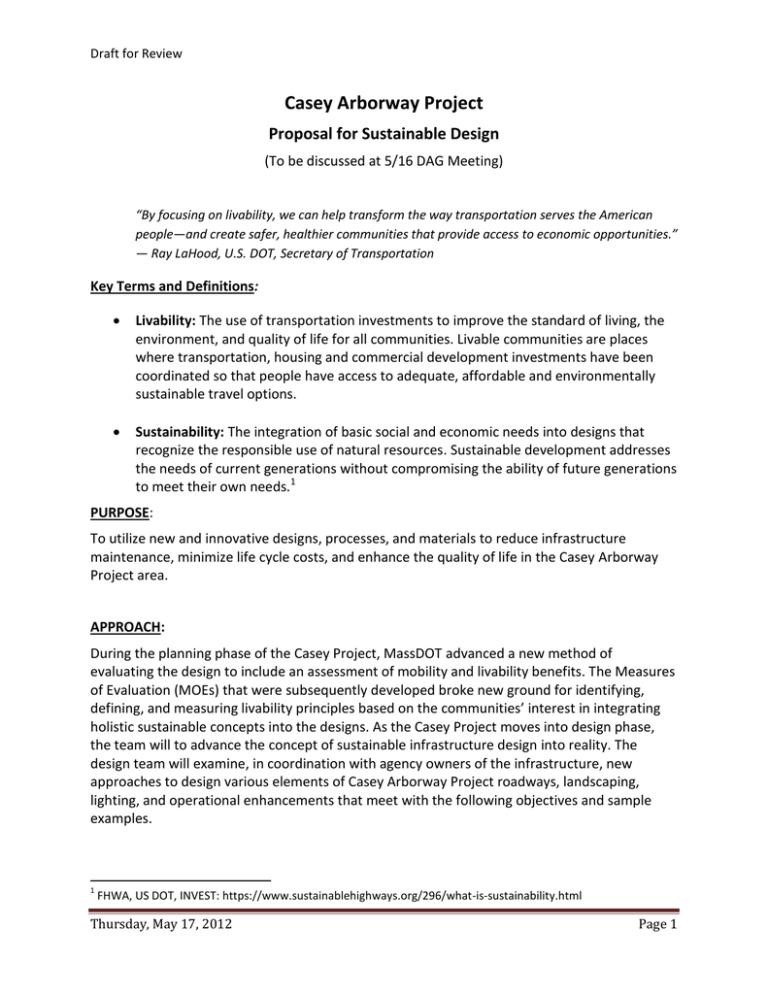
Draft for Review Casey Arborway Project Proposal for Sustainable Design (To be discussed at 5/16 DAG Meeting) “By focusing on livability, we can help transform the way transportation serves the American people—and create safer, healthier communities that provide access to economic opportunities.” — Ray LaHood, U.S. DOT, Secretary of Transportation Key Terms and Definitions: Livability: The use of transportation investments to improve the standard of living, the environment, and quality of life for all communities. Livable communities are places where transportation, housing and commercial development investments have been coordinated so that people have access to adequate, affordable and environmentally sustainable travel options. Sustainability: The integration of basic social and economic needs into designs that recognize the responsible use of natural resources. Sustainable development addresses the needs of current generations without compromising the ability of future generations to meet their own needs.1 PURPOSE: To utilize new and innovative designs, processes, and materials to reduce infrastructure maintenance, minimize life cycle costs, and enhance the quality of life in the Casey Arborway Project area. APPROACH: During the planning phase of the Casey Project, MassDOT advanced a new method of evaluating the design to include an assessment of mobility and livability benefits. The Measures of Evaluation (MOEs) that were subsequently developed broke new ground for identifying, defining, and measuring livability principles based on the communities’ interest in integrating holistic sustainable concepts into the designs. As the Casey Project moves into design phase, the team will to advance the concept of sustainable infrastructure design into reality. The design team will examine, in coordination with agency owners of the infrastructure, new approaches to design various elements of Casey Arborway Project roadways, landscaping, lighting, and operational enhancements that meet with the following objectives and sample examples. 1 FHWA, US DOT, INVEST: https://www.sustainablehighways.org/296/what-is-sustainability.html Thursday, May 17, 2012 Page 1 Draft for Review SPECIFICS: Design Objectives: Define what project attributes contribute to roadway sustainability. Materials & Resources: Incorporate sustainable technologies in design materials and reuse/recycle when appropriate. Operations & Maintenance: Perform a Life Cycle Cost Assessment (LCA) on all design features. Quality of Life: Seek quality of life for all while managing resources wisely. Effectiveness in safety: Lighting, pavement types and markings, etc. Areas of Analysis: 1. Reducing the Urban Heat Island: (e.g. different hard surface paving materials, use of cool pavement, increase tree canopy with species that meet DRC standards and Olmsted design, etc.) 2. Roadways: materials, costs, maintenance (e.g. recycled pavement, rubber-modified hotmix asphalt, use of regional materials, etc.) 3. Landscaping: maintenance, filtration of sounds and pollution, temperature and salt sensitivity, etc. (e.g. grass that requires mowing twice a year, non-invasive local plants, incorporate xeriscaping, etc.) 4. Water Resources and Management: (e.g. rain gardens, bioswales, permeable pavement, maximize evapotranspiration potential, etc.) 5. Lighting (Signals and Street Lights): cost, maintenance, efficiency (e.g. install Energy Star qualified LED street lights) RESOURCES AND REFERENCES The Study Team will utilize the following resources to develop and evaluate the appropriate sustainable principles, measures, and elements to include in the Casey Arborway Project designs. MassDOT Sustainability and Livability Policy Framework including: o GreenDOT o The Healthy Transportation Compact o Global Warming Solution Act 2008 (with MassDEP) City of Boston Complete Streets Guidelines Greenroads sustainability rating system for roadway design and construction Institute for Sustainable Infrastructure Envision Sustainability Rating System FHWA INVEST Sustainable Highways Self-Evaluation Tool CTPS – “Paths to a Sustainable Region”, Long-Range Transportation Plan Thursday, May 17, 2012 Page 2
